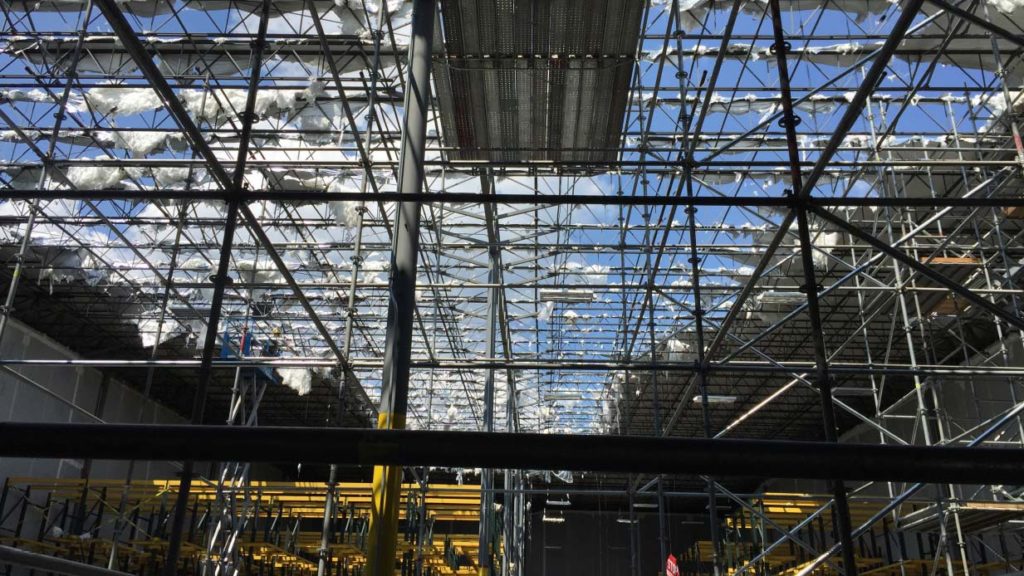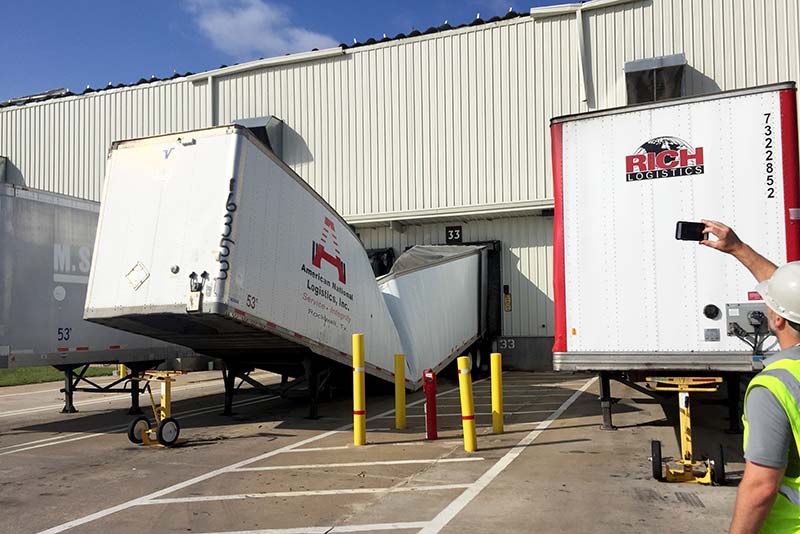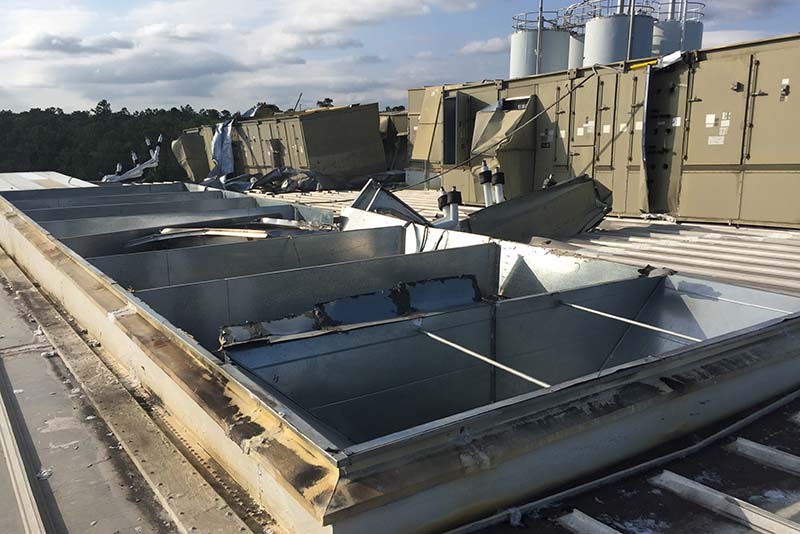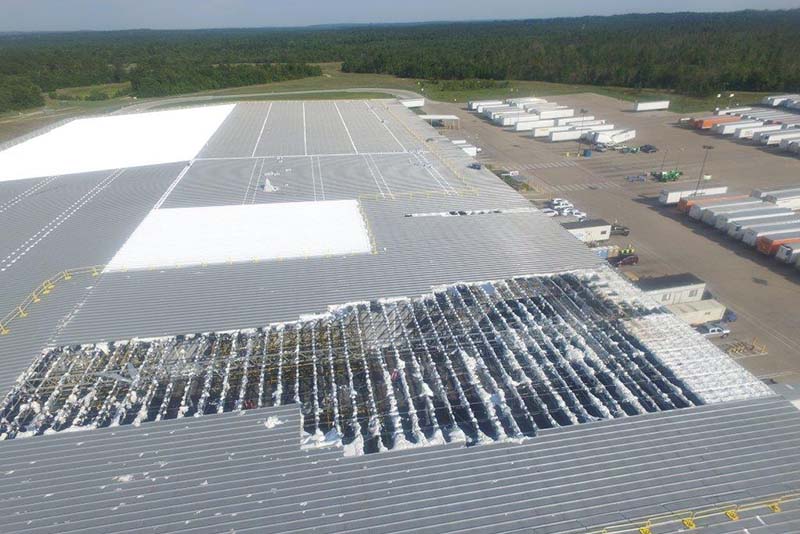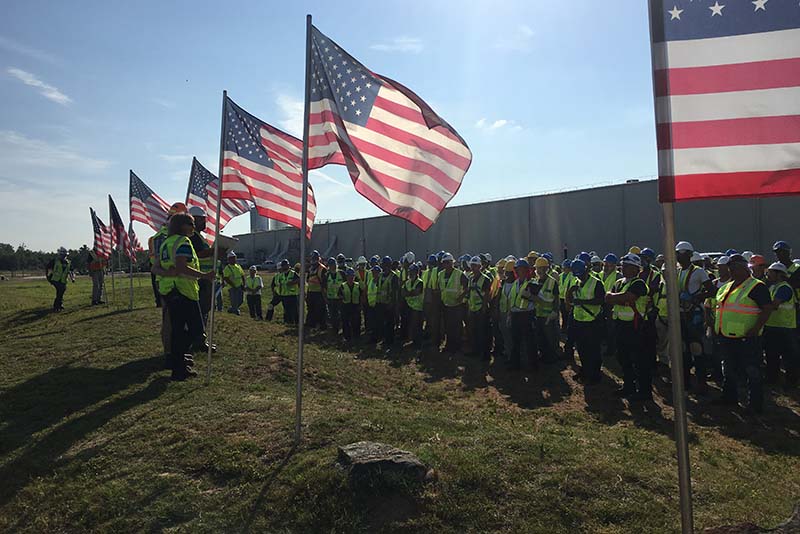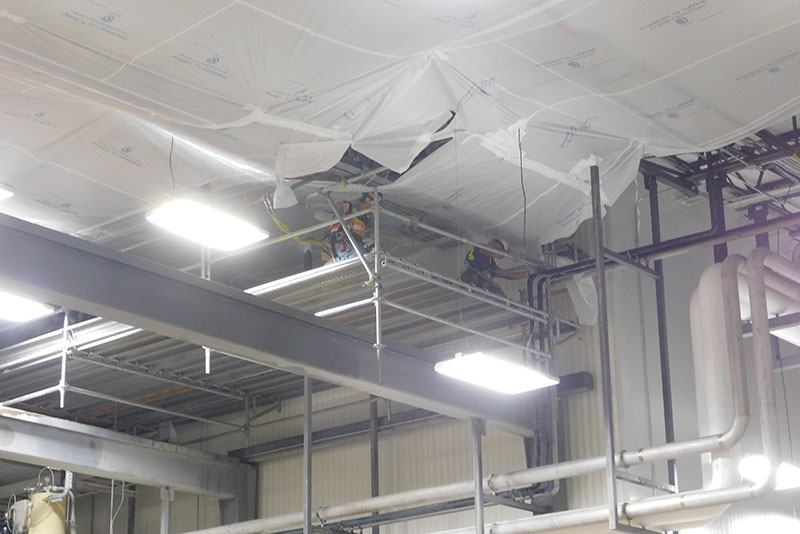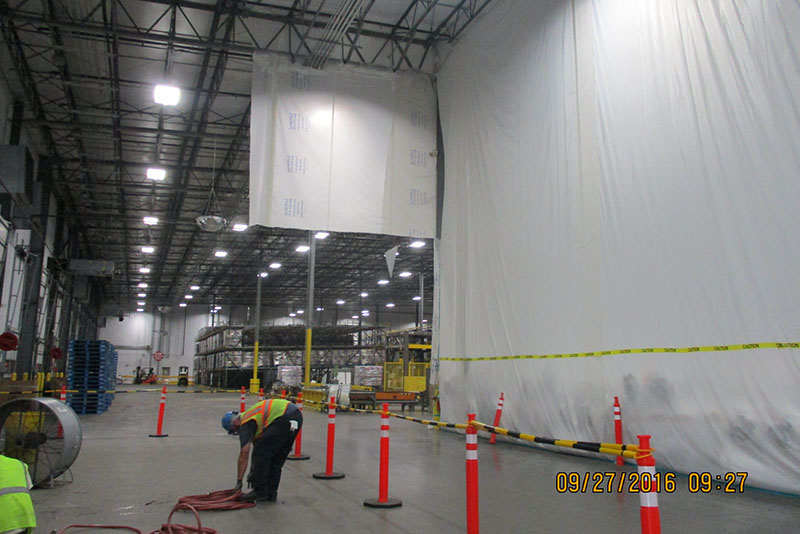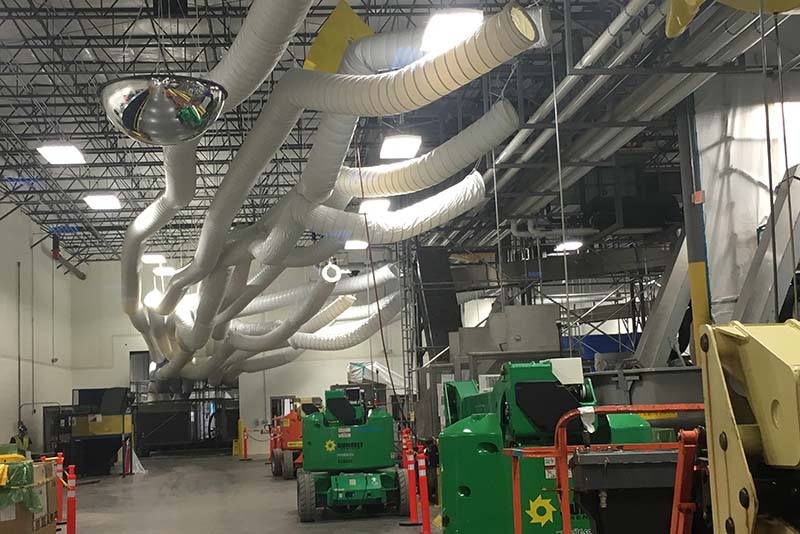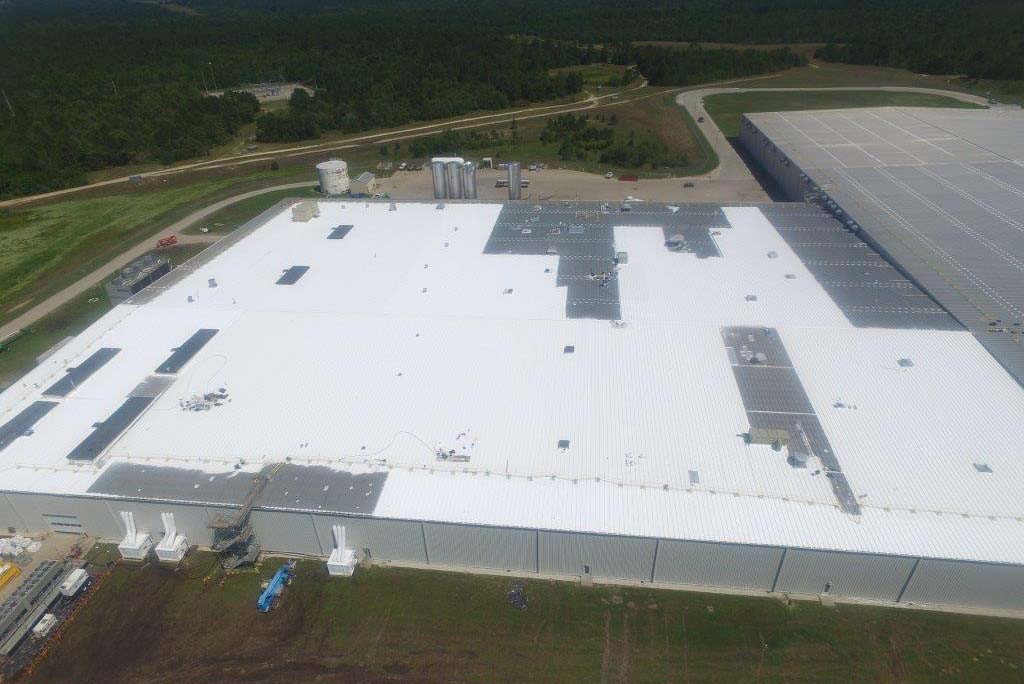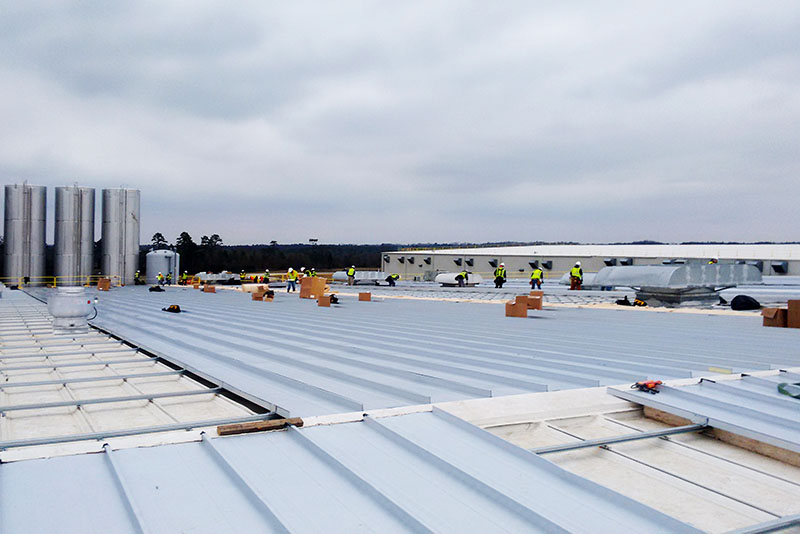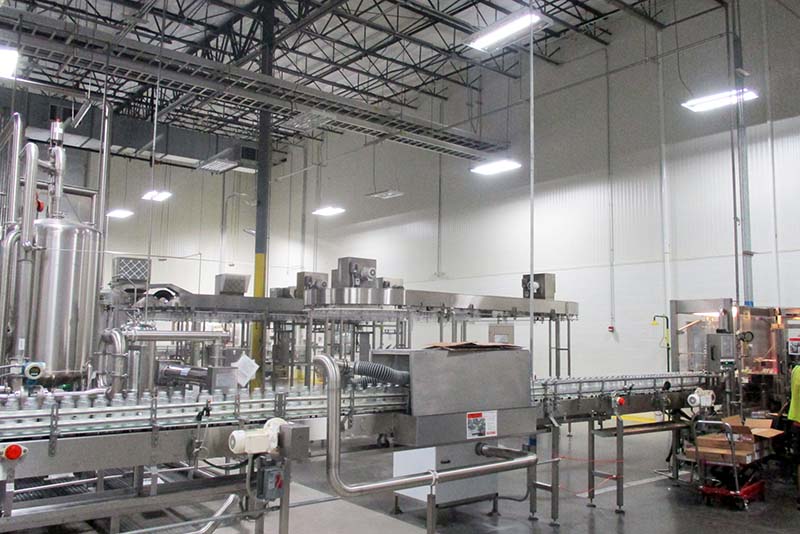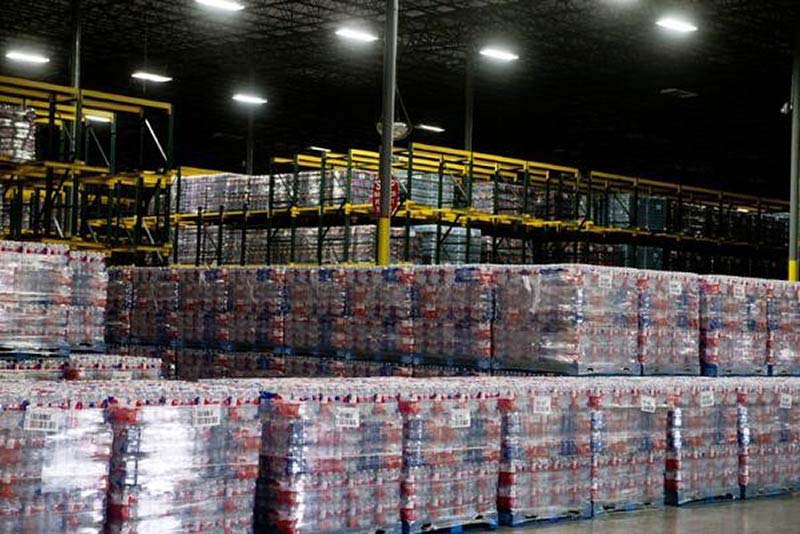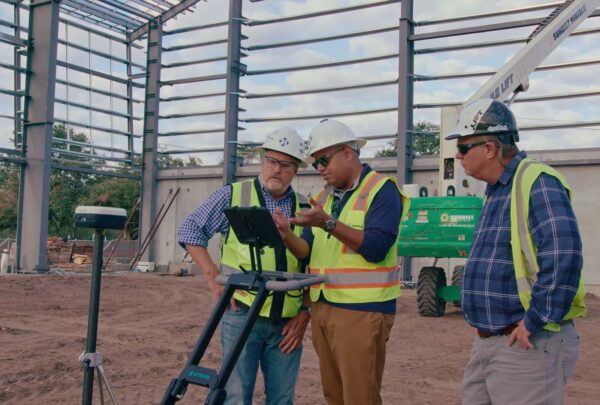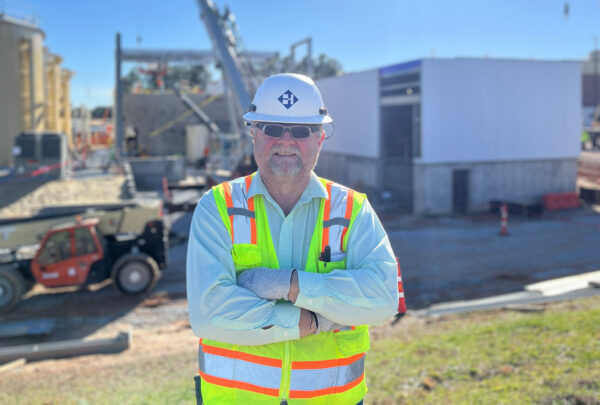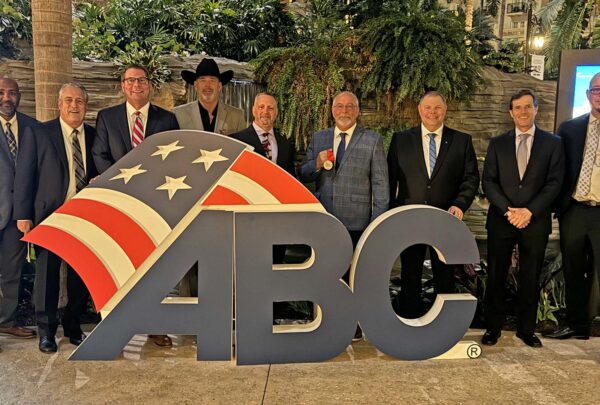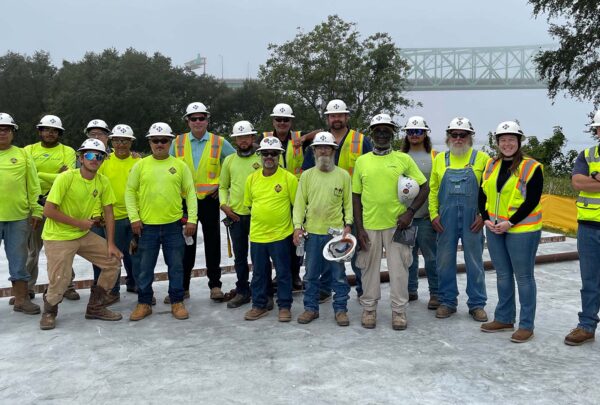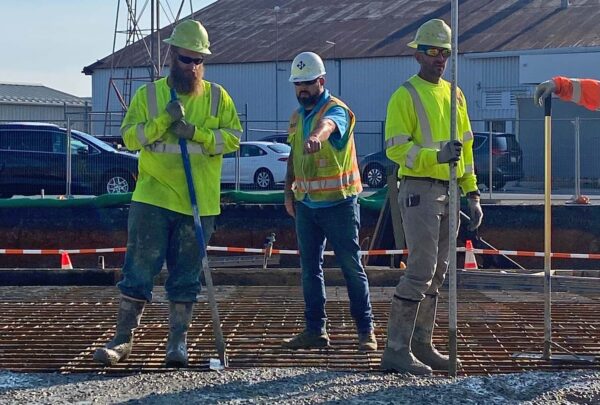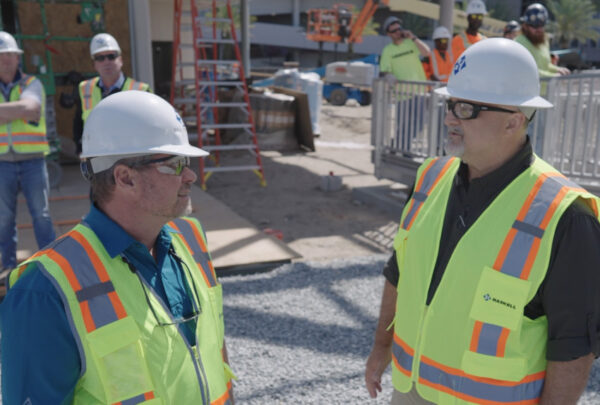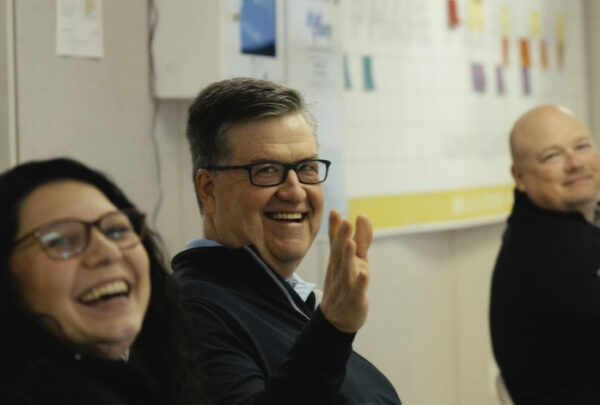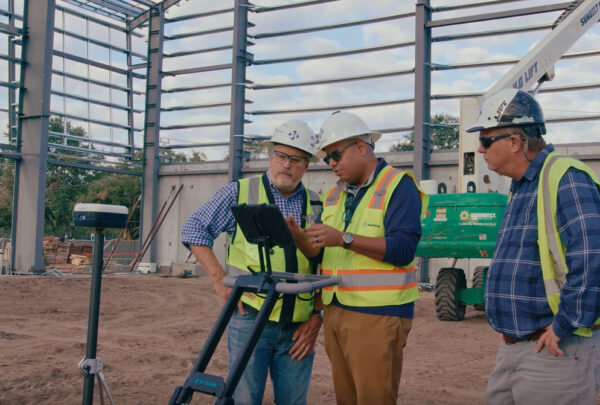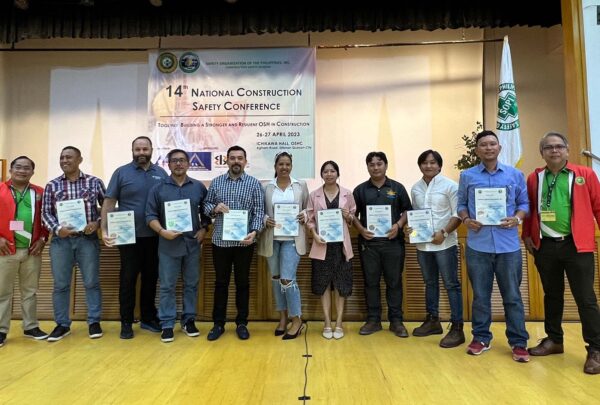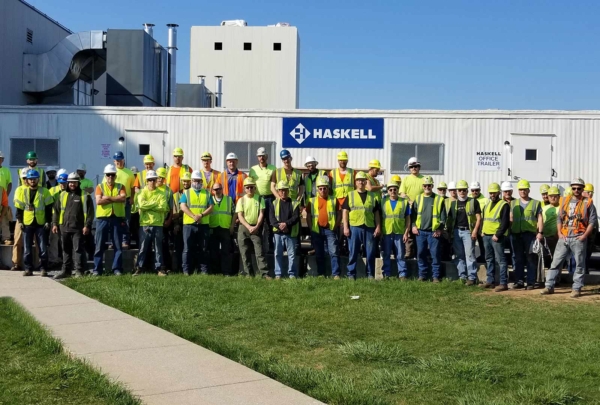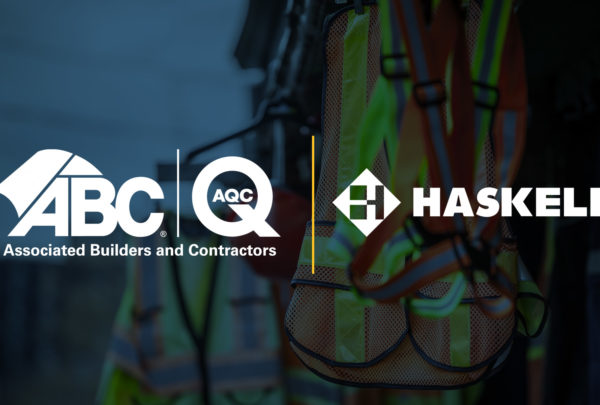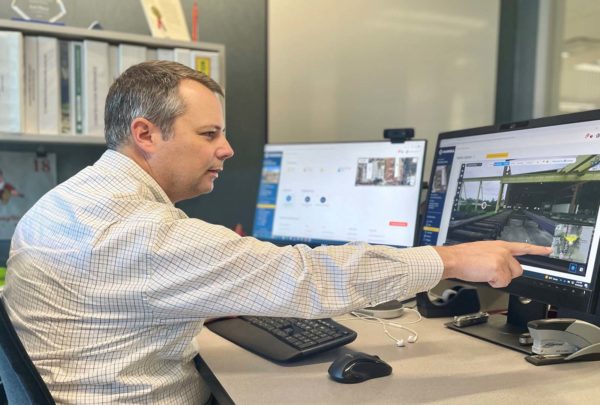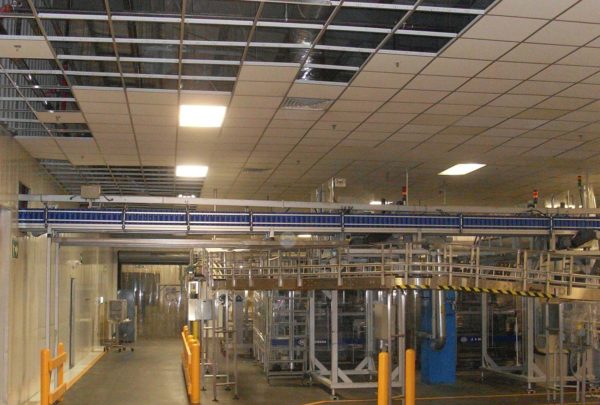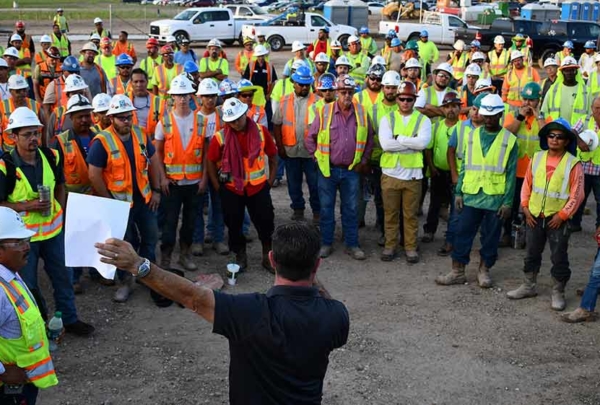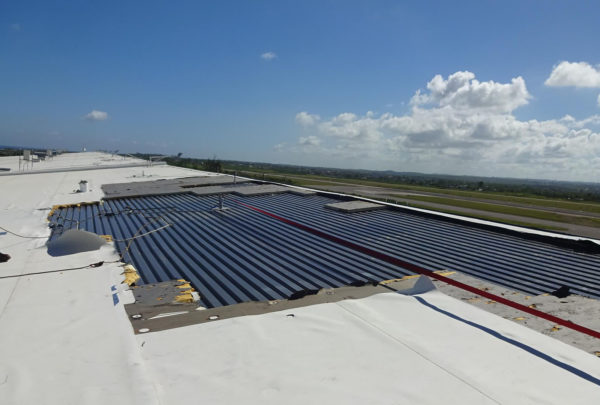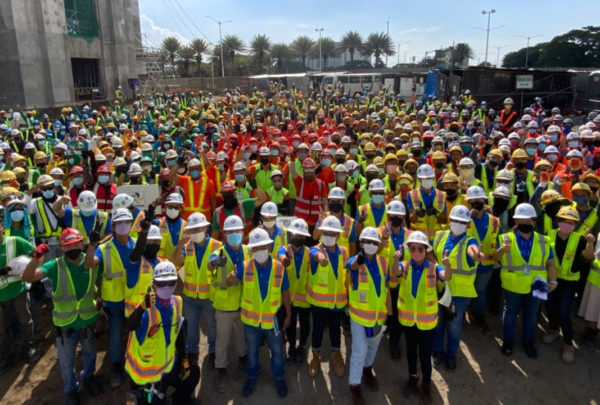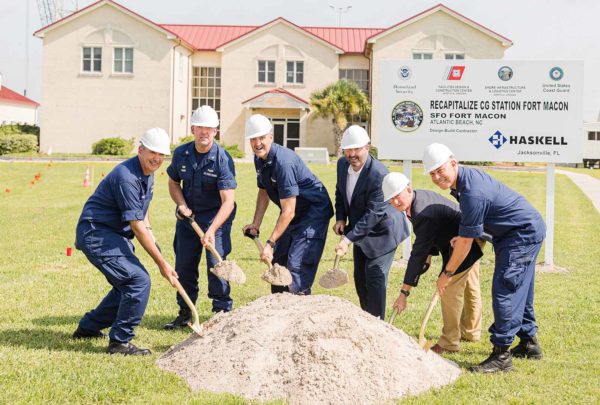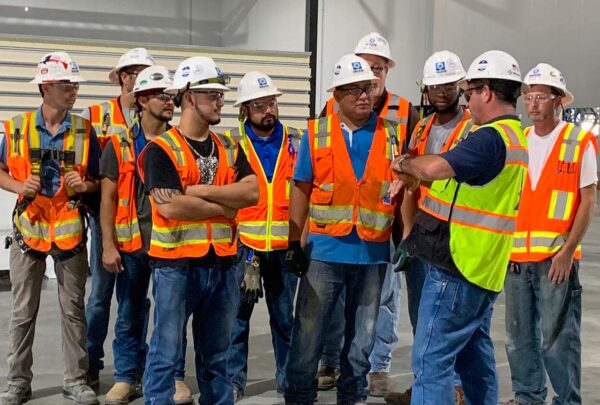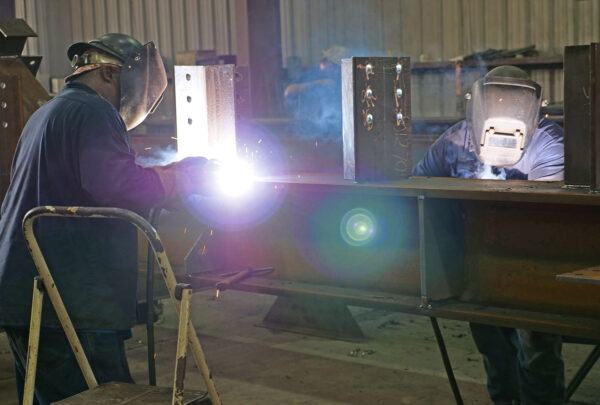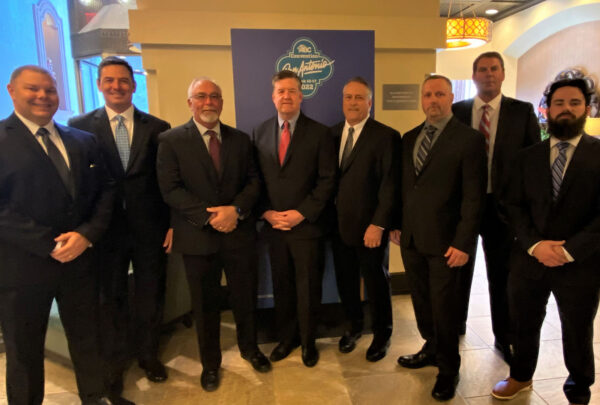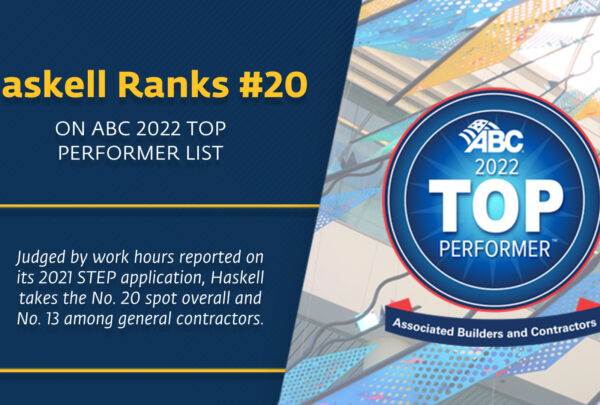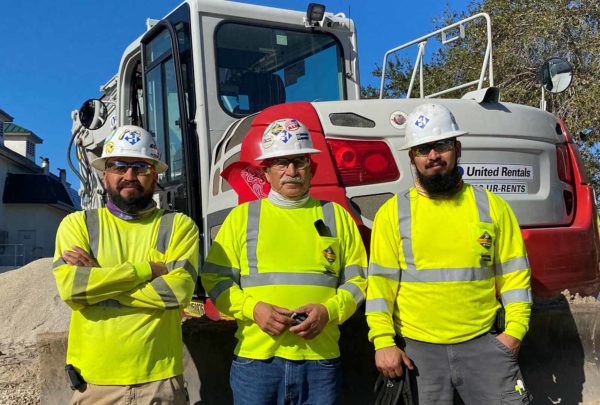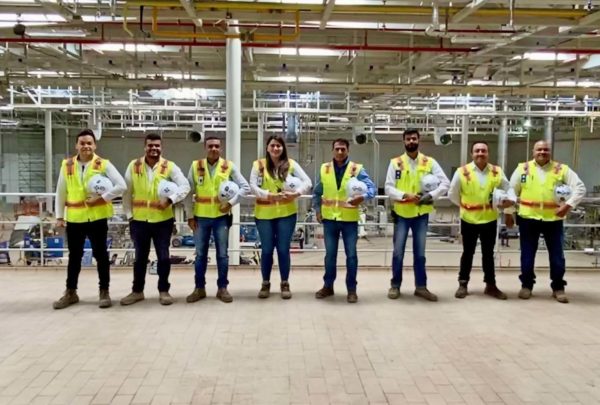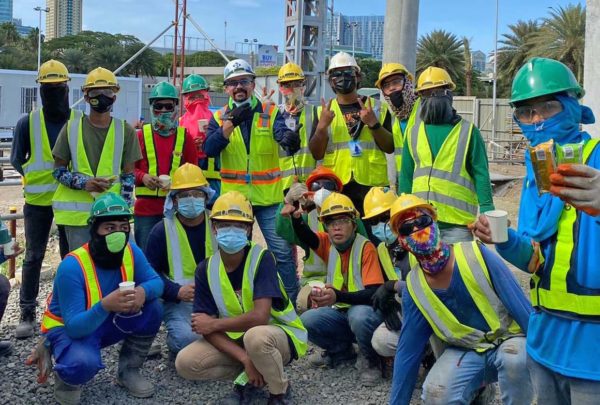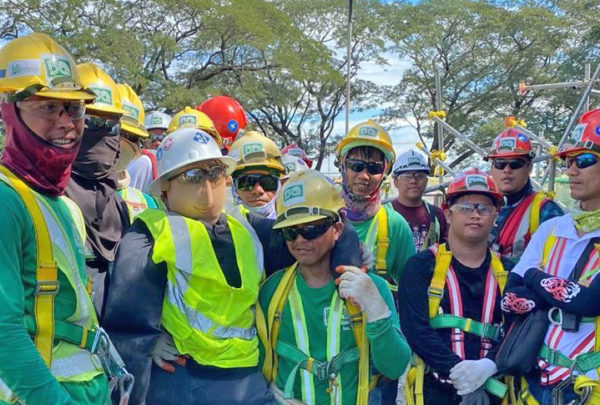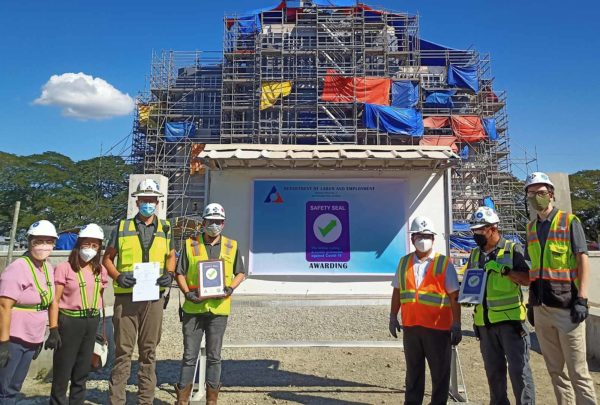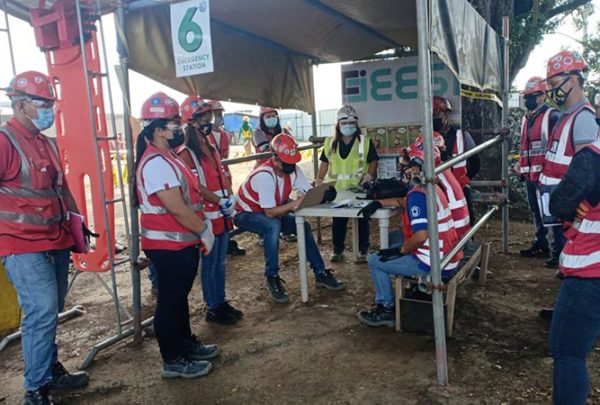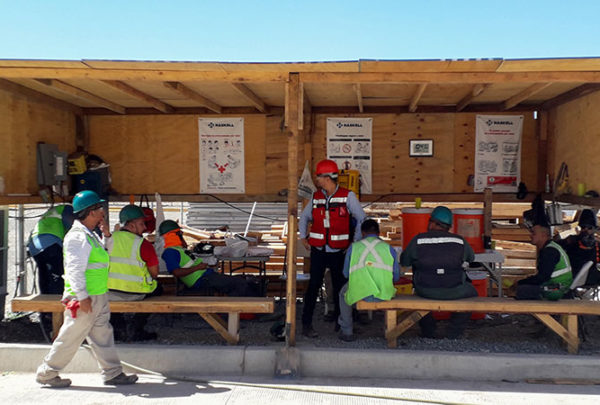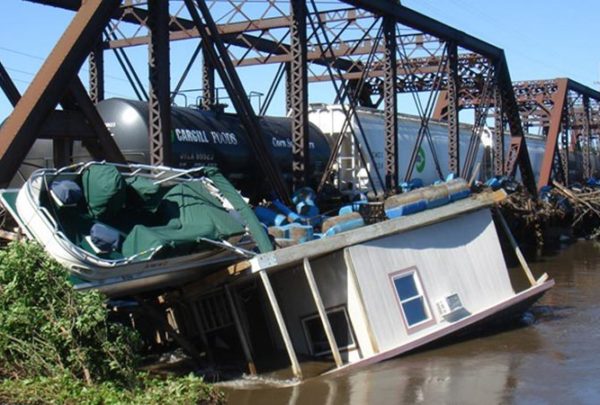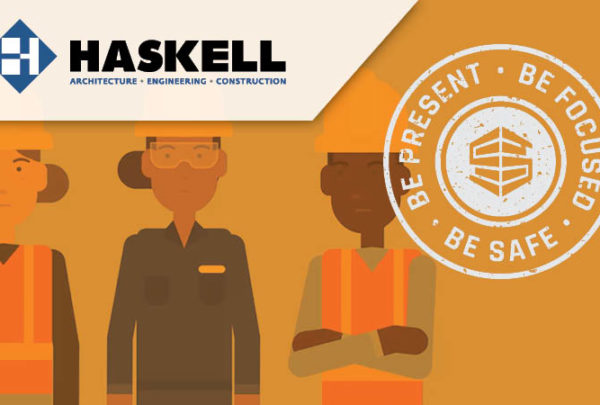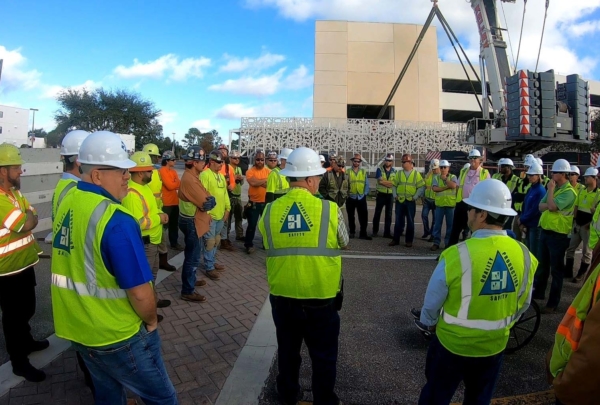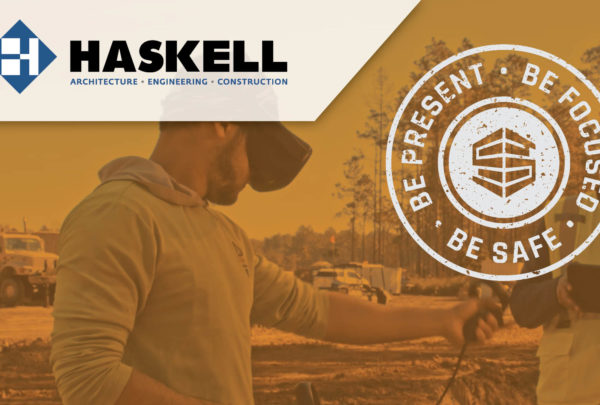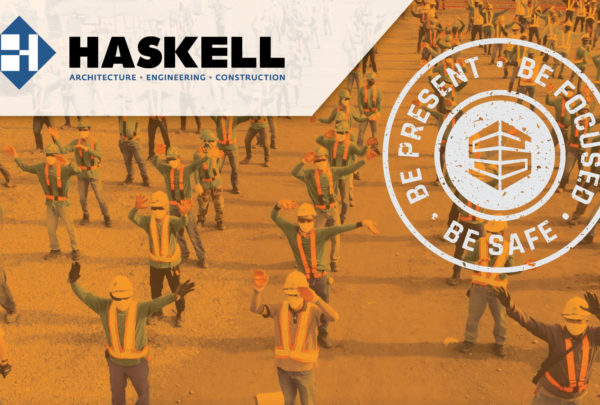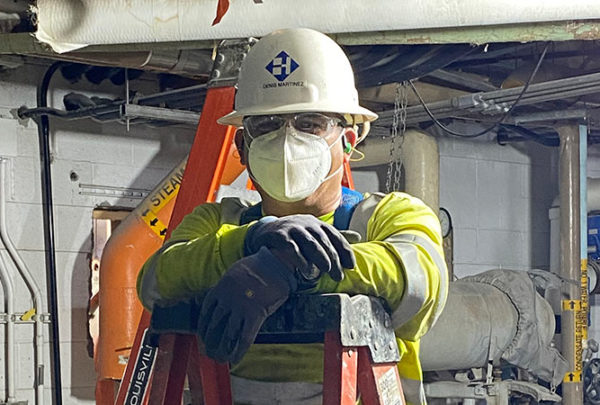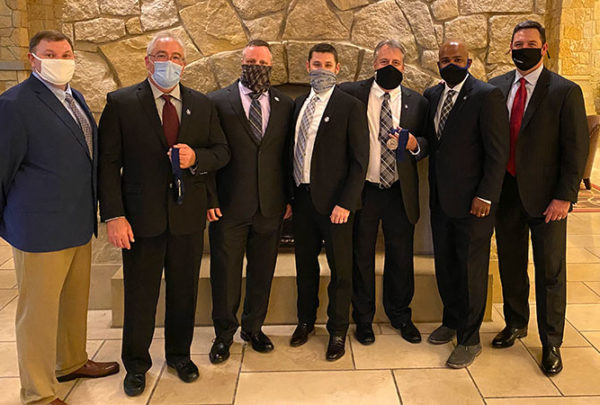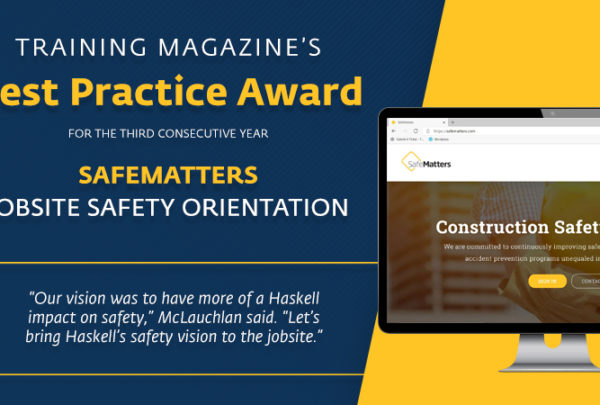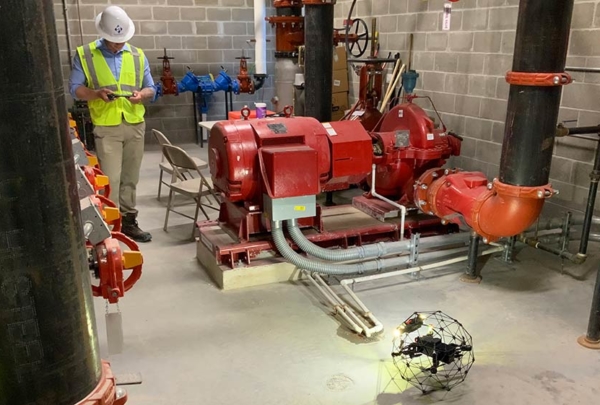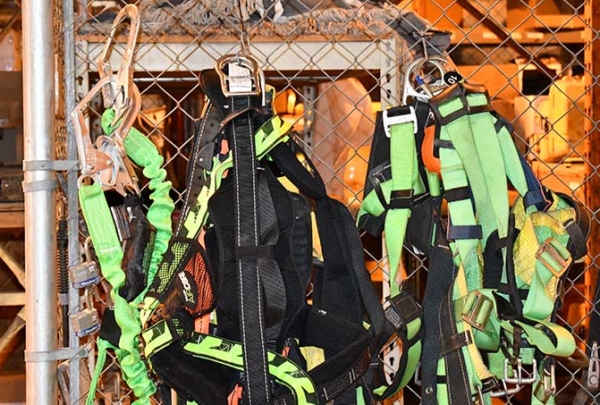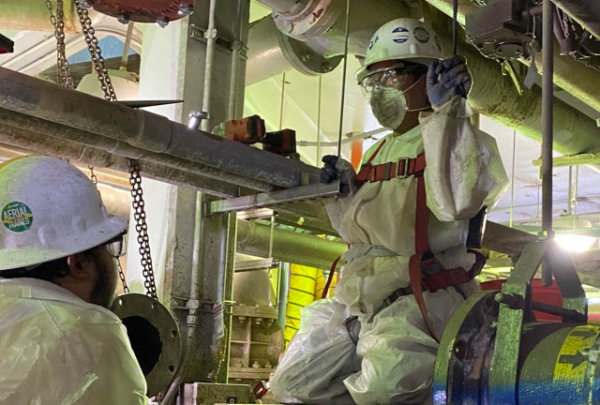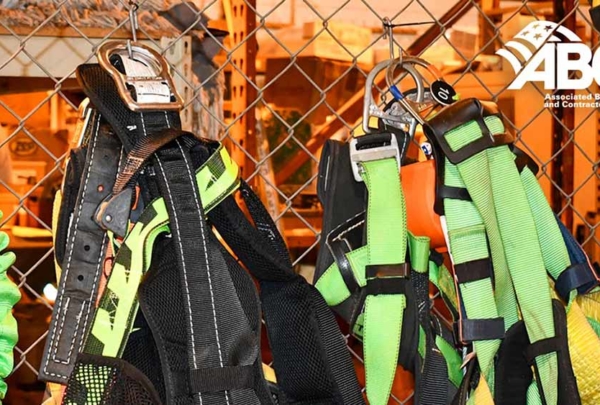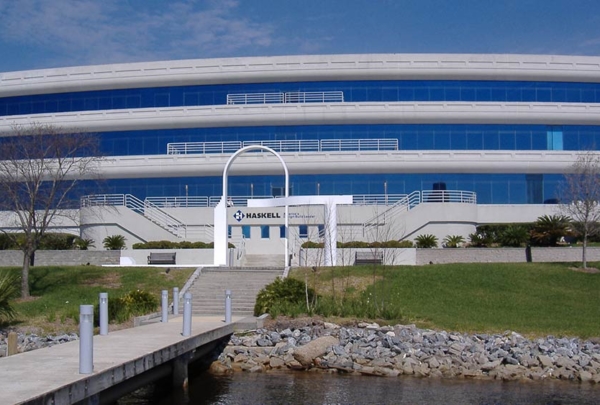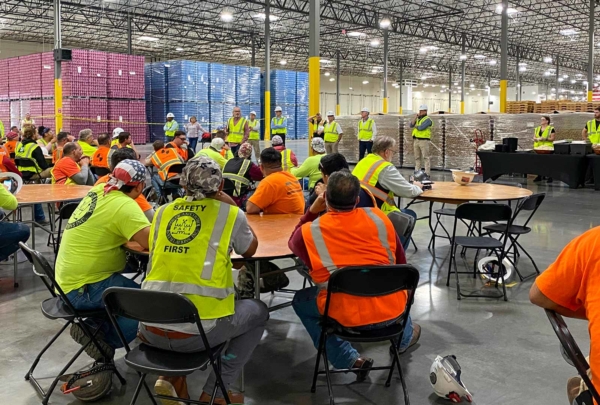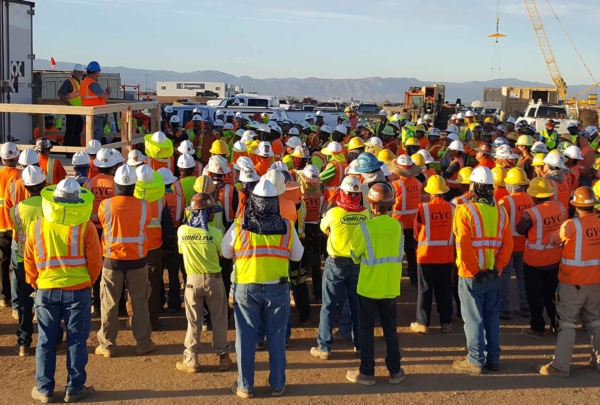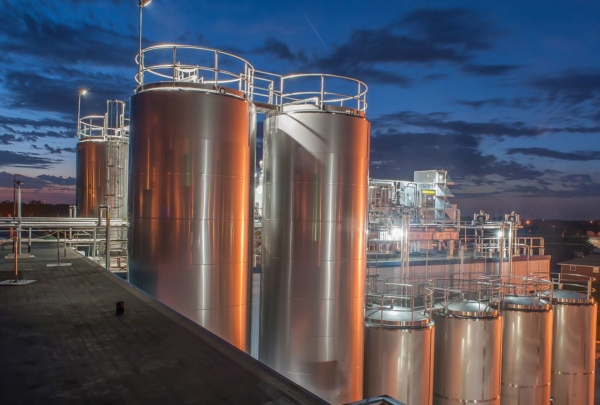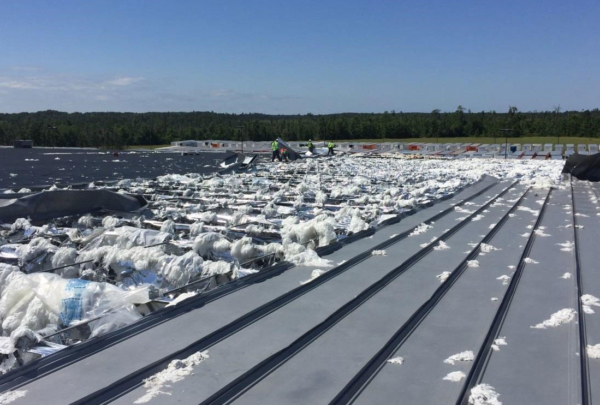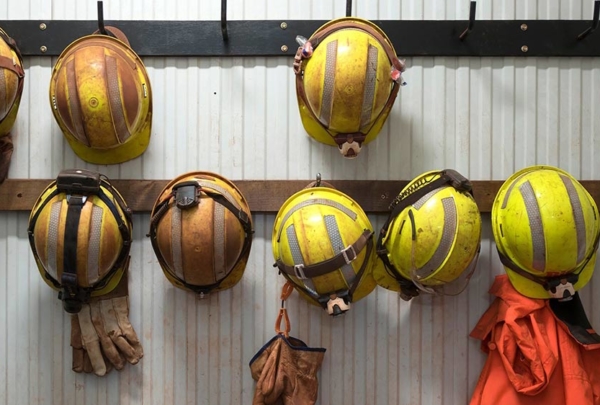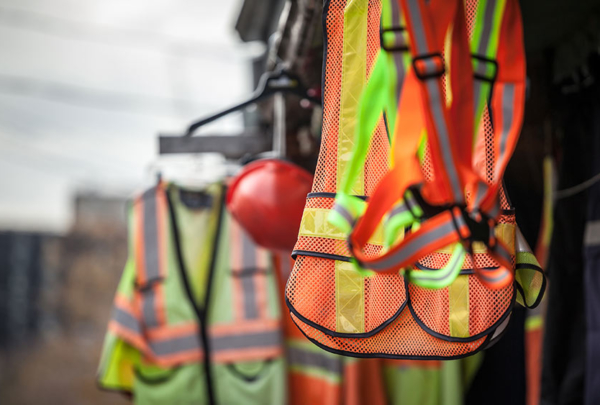In the early evening of Friday, April 29, 2016, the scene at Nestlé Ozarka Bottling Facility in Hawkins, Texas, was a normal one. The night shift had arrived to relieve the day shift, who could now look forward to the evening ahead – perhaps dinner with family or a night out with friends.
But before any plans could materialize, disaster struck at 6:18 p.m., when an EF2 tornado landed a direct hit on the 618,000-square-foot facility. Twisting at 125 miles per hour, the tornado ripped through the building, severely damaging the roof, interior walls, offices, electrical room, air handlers, cooling towers, exterior lights, tractor trailers and personal automobiles.
Because the tornado struck during a shift change, there were double the normal number of personnel on site – 150 total. Incredibly, none were injured. As the storm battered the structure, employees sought refuge in the facility’s bathrooms.
“The tiles in the roof were bouncing,” one employee said in a video posted by Nestlé. “It sounded like a freight train.”
The tornado rendered all seven bottling lines inoperable, and Nestlé was forced to cease production at the facility. This carried significant implications as the Hawkins facility is located on a natural freshwater spring owned by Nestlé, and this spring supplied not only this facility but others as well. Each day production was down meant substantial revenue loss.
Time was of the essence as Nestlé faced mounting revenue losses and needed to return to production quickly but safely.
Call for Help Met with Immediate Response
Nestlé immediately contacted Haskell, design-builder for the facility’s opening in 2003 and expansion in 2006. Within six hours of the call, Haskell had boots on the ground in Hawkins, and the relief effort was underway.
First on site was Edward Kochick, a structural engineer handpicked by Haskell for his extensive experience in assessing damaged facilities. Upon dispatch, Kochick jumped in his car and drove five straight hours from his home in Oklahoma to the Texas facility. When he arrived, he toured the site to assess the damage and began developing solutions to 1) ensure the facility was safe and 2) restore structural integrity.
One look at the roof revealed this would be no easy feat. The twister tore a gaping 14,000-square-foot hole in the warehouse ceiling and dragged six 32,000-pound air handlers along the rooftop, destroying the units and gouging holes as they went. As a result, rainwater was seeping into the insulation and ultimately onto the production floor. This caused two issues: first, potential exposure of contaminants to the water being bottled; second, damage to the processing and packaging equipment. Both factors were significant in the effort to get production back on track.
Meanwhile, experienced Haskell construction management and safety teams were converging on Hawkins. Because of Haskell’s previous work on the facility, they were able to review project documents and drawings as they traveled, familiarizing themselves with the site and formulating potential solutions.
By Tuesday, within 72 hours of the initial call, Haskell now had structural engineering, safety, and construction management personnel on site. The familiarity and trust already established between Haskell and Nestlé gave the recovery effort a running start.
Haskell project manager Chad Kunkel took control of the job site, establishing a chain of command and opening lines of communication that included hourly meetings between Nestlé project leaders, on-site contractors and his own team, which now featured his own hand-picked restoration specialist.
“From my experience, in the first days of a project, you can’t overcommunicate,” Kunkel said. “After an event happens, you need extremely tight control over activities because conditions are hazardous, and people are on edge.”
Haskell worked fast to stabilize the site, identifying and mitigating safety hazards so recovery could begin. Amidst disorder and disarray, Nestlé welcomed this newfound peace of mind.
“Upon arrival of Haskell, the chaos of disaster quickly changed to order, situation control, and a feeling of relief,” said Roger Wilmot, one of Nestlé’s key stakeholders on the project.
Using Innovative Solutions to Bring a Facility Back to Life
Within days, Haskell’s onsite project team included construction, engineering, design, safety, and scheduling professionals from across the southeastern United States. Collaboratively, Nestle and Haskell stakeholders decided to focus on restoring the facility’s most important production line first, then shift to the other six.
Ultimately, Haskell developed a schedule to put the facility back in production within 49 days of the tornado. This scope included the roof, mechanical system, electrical room and process equipment, which not only needed to be repaired, but cleaned and sanitized to U.S. Food and Drug Administration (FDA) standards. To achieve this momentous task, Haskell’s team worked seven days a week with day and night crews, committing as many as 350 workers to the project on a single day.
With safety as its priority, Haskell design-build professionals leveraged their disaster relief experience and partnerships with specialized subcontractors to implement innovative solutions as they addressed the challenge of restoring production while other rebuild activities were ongoing in adjacent areas.
For starters, roofing insulation could not be reached via lift due to its location in and among process equipment. In response, Haskell teamed with a utility insulation and scaffolding contractor that would erect scaffolding in one area so the insulators could work, then dismantle it, move it to another area, and erect it again. The build-up-tear-down process was constant, but it worked where lifts could not.
Haskell also needed to isolate warehouse and production areas to prevent exposure to contaminants such as dust, debris, wind and rain. Temporary plastic walls were used to enclose each of the seven production lines, which enabled Haskell to bring up one line at a time. Isolating the product in the warehouse area proved to be trickier, as doing so would require barriers reaching 40 feet high. The team elected to shield the area with a specialized temporary plastic partition lined along the bottom with water-absorbing sandbags. In the tough Texas winds, the massive curtains stretched wide, but held strong.
“The plastic expanded like the sail of a sailboat,” Kunkel said. “That was one area where we pushed the boundaries of what these materials could withstand, and we were successful.”
To expedite production, temporary air handling units, ductwork, and chillers were brought in for the packing and processing area. Teams worked tirelessly repairing cooling towers, injection molding machines and concrete masonry unit (CMU) interior walls, then sanitizing areas to meet FDA standards. Meanwhile, a spray coating was applied to create a temporary watertight seal.
“Remarkably, and ahead of anyone’s expectations, Haskell developed and effectively executed a strategy which allowed production to resume on June 17,” Wilmot said. “Within 49 days, Nestlé employees were able to return, and our bottled water products resumed shipments to market.”
The next target was to bring the rest of the facility back into production. Over the next several weeks, Haskell increased manpower, logging 107,190 manhours in July, peaking on July 12 with 432 workers onsite.
Line by line, the facility was restored.
With progress came new challenges, as each area Haskell restored to operation limited their access to ongoing repairs. When it came time to repair the ceiling above the newly operational injection molding area, Haskell turned again to the scaffolding specialists, who built suspended scaffolding that was mounted and hung from the ceiling and accessible via scissor lift.
“Typically, our engineers are reluctant to hang scaffolding from joists, but this was a specialized vendor that had experience with this,” Kunkel said. “We could utilize a new methodology based on input from experts that allowed us to solve the problem.”
By July 23, less than three months after the tornado, all seven bottling lines were back in production. On the heels of the catastrophic tornado that Nestlé estimates caused $100 million in building damage and lost revenue, Haskell rallied to restore normalcy and get Nestlé employees back to work.
The subsequent facility restoration would take seven months. Because all lines were now in operation, Haskell once again relied on innovation to complete the work without interfering with production.
Repairing the manufacturing area roof using screws could expose the process equipment underneath to contaminants such as metal shavings, air, and water. With screws out of the question, Haskell teamed with a structural engineer specializing in tornado damage to reach a creative solution: They used a series of clamps to secure structural rails 90 degrees to the slope of the existing roof. This allowed them to install the new roofing panels that performed the same as the original panels – all while protecting the production below.
“That’s the design-build approach,” Kunkel said. “Experienced construction managers collaborating with internal designers and external specialists to come up with a unique solution to a problem you don’t face every day.”
In response to the disaster, Nestlé chose not to simply return to the status quo, but to apply lessons learned to emerge a better, stronger, and safer organization. Recognizing the need for a protected place employees can go during such events, Nestlé asked Haskell to design and install storm shelters in several Nestlé facilities, including the Hawkins plant.
The Design-Build Difference
For Roger Wilmot, the project’s success was testament to Haskell’s design-build approach, where design and construction professionals work hand-in-hand to create and implement innovative solutions.
“Observing execution of the design-build process by Haskell, it was apparent no other solution could have provided the results we benefitted from,” Wilmot said. “The design-build services of Haskell provided an exceptional fast-track solution for the needs of Nestlé at our Hawkins, Texas, facility.”
Kunkel agrees, pointing not only to his team’s design-build expertise, but also to their emergency response and recovery experience, which he said helped set the tone from day one.
“We came in and instantly recognized the urgency,” he said. “We knew what the priority was and how to quickly get momentum pointing in the right direction. Design-builders who understand this scenario can move faster if they know what is permitted, what isn’t, and how to work in this environment.”
Kunkel also credited Haskell’s preexisting partnerships with specialized subcontractors who had unique experience in just the right areas. He believes combining the experience of design-build professionals with specialized subcontractors created a recipe for success.
Years later, Kunkel proudly displays in his office the first water bottle produced by the Hawkins facility following the tornado. To him, the bottle represents an unforgettable display of collaborative resiliency and design-build excellence that brought people back to work and a facility back to life.
“This project was extremely rewarding,” he said. “It was the pinnacle of my project management career.”
